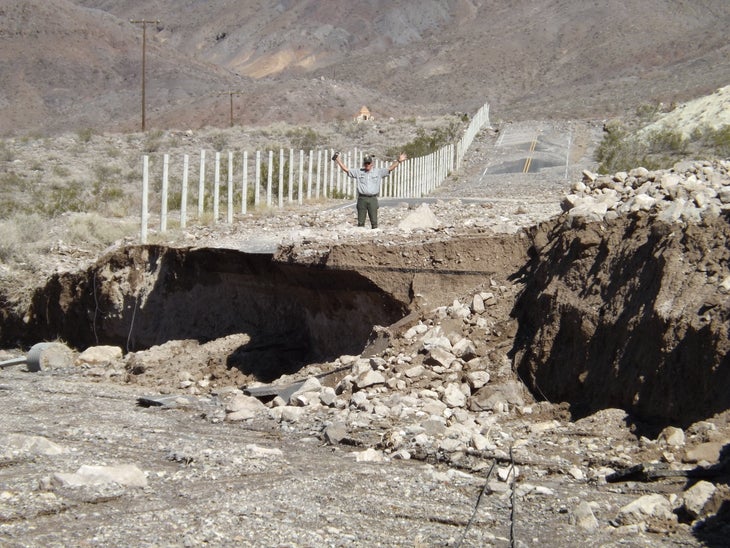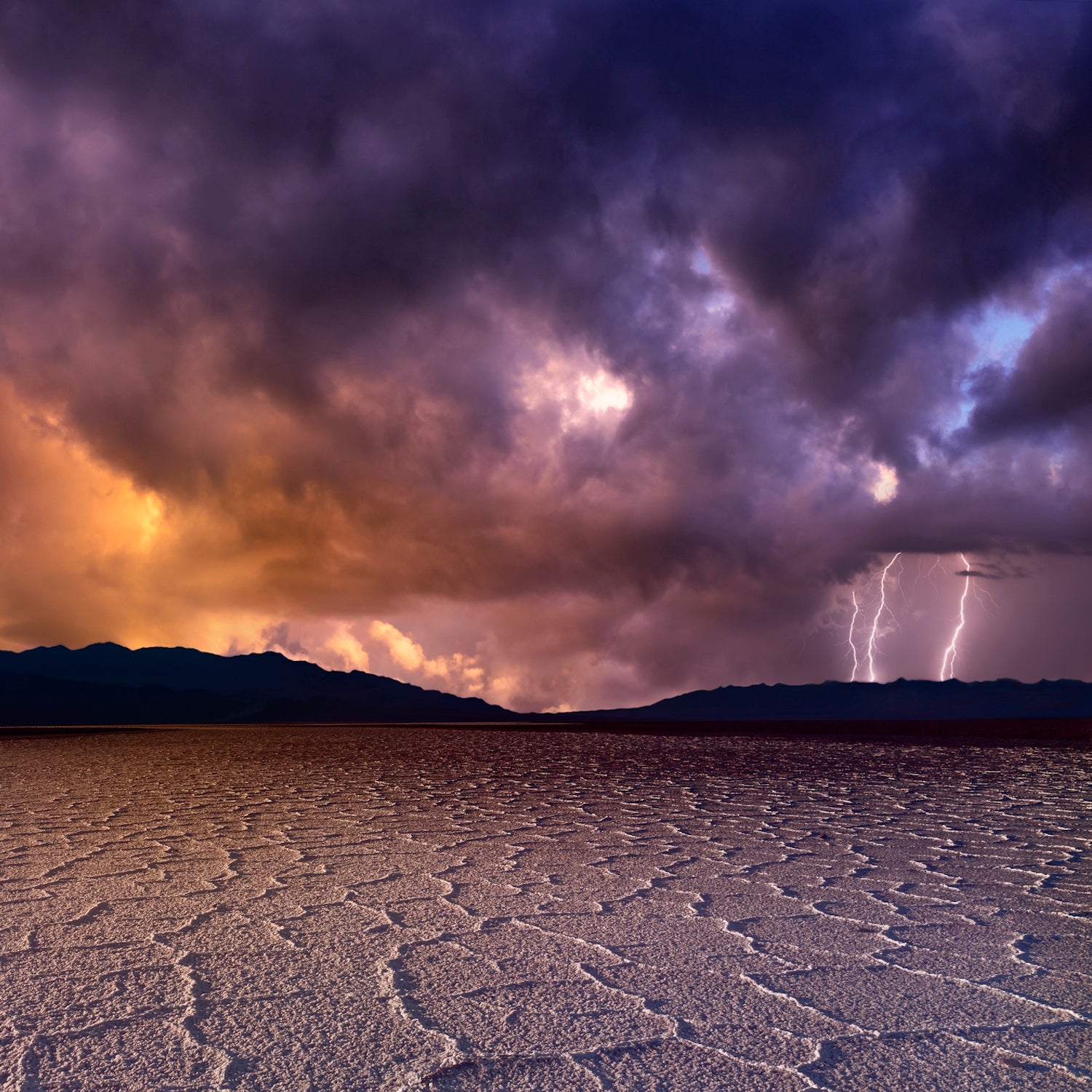Over the summer, Denali National Park shut down its historic 92-mile road, the only artery into the rugged center of the park, at mile 42. This decision was preceded by heavy rains in early August, which triggered a landslide in the Polychrome Pass area that accelerated downhill at a rate of over ten inches per day. The road closed to buses and private vehicles on August 24.
“Changing climate is driving frozen ground to thaw, resulting in unpredictable and increasing landslide movement rates… that are unprecedented in the history of the park road,” said park superintendent Don Striker . He later added that rapidly thawing permafrost has compounded the issue, making the road unsafe for tourists.
What was once considered a manageable slide that only needed repair every two to three years in the 1960s has since grown into a force requiring hypervigilance by the Park Service. In 2018, the road’s slumping increased to a rate of half an inch per day. By August 2020, that number had jumped to three and a half inches.
“As the ground there continues to melt, it has an acceleration process of its own,” said Vanessa Jucszak, executive director of the Denali Chamber of Commerce. She explained that the reason this small section of road is so tricky to divert is because, once permafrost melts, the ground will slump until it hits an impermeable layer like clay, then slide along that layer, making any new changes structurally questionable.
The Park Service proposed a around the landslide to connect to the current road and avoid losing scenic views, and money for the repairs has been allocated into President Biden’s proposed 2022 budget, but the issue at hand is far larger than one road in one park. It might seem easy to write off melting permafrost as a far-flung nuisance threatening the Arctic’s future, but climate change has already wreaked havoc on dozens of parks in the lower 48 as well.
The trend is alarming, and it’s only getting worse.
Chip Jenkins, superintendent of Grand Teton and former superintendent of Mount Rainier and North Cascades National Parks, is no stranger to the devastating effects of climate change in the Pacific Northwest. “When glaciers retreat, there’s actually more material available in the river systems to be transported by water,” he said.
In 2006, Mount Rainier endured a massive flood on the Nisqually River side, where the river rose 15 to 20 feet in a few days. The river eventually destroyed the popular and the road leading to it. There are no current plans to reopen it.
Even the arid desert isn’t immune to our planet’s changing climate. Nine of the ten hottest summers in the history of Death Valley have been . “How hot and dry Death Valley is is why flash floods have so much of an impact here,” said Abby Wines, a spokesperson for the park.
In 2004, the park suffered an enormous flash flooding event that killed two visitors in the Furnace Creek area and shut down the park for ten days. More recently, in 2015, a over Grapevine Canyon funneled rain directly into the historic area of Scotty’s Castle, causing a flood of 3,200 cubic feet per second down the main wash. “The visitor center had four feet of mud and rocks in it, and the force of the flood was so much that it punched out a wall on the opposite side of that building,” said Wines.
Most of the eight-mile road leading to the site was obliterated.

Rising temperatures aggravate storms, said Wines. Following predictions from the National Weather Service, she and her team are expecting a worsening of flash floods. “The climate change model for this area, the Southwest, predicts that the monsoonal style of thunderstorms are going to get more frequent and more intense,” she said.
The trend is alarming, and it’s only getting worse. In Everglades National Park, the vintage , a bastion of Mission 66 park architecture, was hit hard in 2005 by Hurricanes Katrina and Wilma. In 2017, Hurricane Irma nearly destroyed it, prompting a complete rehabilitation. Allyson Gant, a spokesperson for the park, said that the new iteration will be far more storm-resistant, with stronger glass to withstand winds up to 200 miles per hour.
At Indiana Dunes, 45 miles west of South Bend, the Park Service has had to resort to large-scale “beach nourishment,” relocating tens of thousands of cubic yards of sand to handle as storms on Lake Michigan become more severe and warmer winters bring less protective shelf ice. If nothing was done, many sandy stretches where hikers and families sprawl out in the summer sunshine would be gone completely.
This level of infrastructure collapse not only negatively impacts the park going experience; it’s also expensive. “We spent $450,000 last year on that nourishment project,” said Paul Labovitz, superintendent of Indiana Dunes. “And we’ll have to do that forever.”
Death Valley was forced to cobble together $55 million to repair the Scotty’s Castle area, $14 million for the road wash-out, and $31 million to restore and reinforce the buildings and surrounding structures.
For some parks, it may already be too late, but the fate of many others rests in our hands.
The mission of the is to preserve the natural and cultural resources and values of the national park system for the enjoyment, education, and inspiration of future generations. The NPS shouldn’t have to decide between spending millions of dollars each year to fix climate change-related infrastructure collapse and developing new ways to improve the visitor experience.
There’s already a nearly that will likely get worse as temperatures rise. Glacier had to rebuild its beloved after a fire in 2017 wiped it out. California keeps experiencing record-breaking fire seasons year after year. Sequoia and Lassen Volcanic are both currently on fire, with of Lassen’s 106,452 acres already burned.
Not only will the parks need more funding as soon as possible, they’ll also need help from us in terms of lifestyle changes and leave no trace efforts to help quell the effects of climate change. For some parks, it may already be too late, but the fate of many others rests in our hands.
“We need to continue to work with the communities that we’re in to try to understand what these changes on the landscape may mean over several decades, and how we can work collaboratively to try to maintain resiliency,” said Grand Teton’s Jenkins. “So that we continue to have grizzly bears and moose and bighorn sheep, as well as the ability to come to the park and see those and derive inspiration and joy.”


